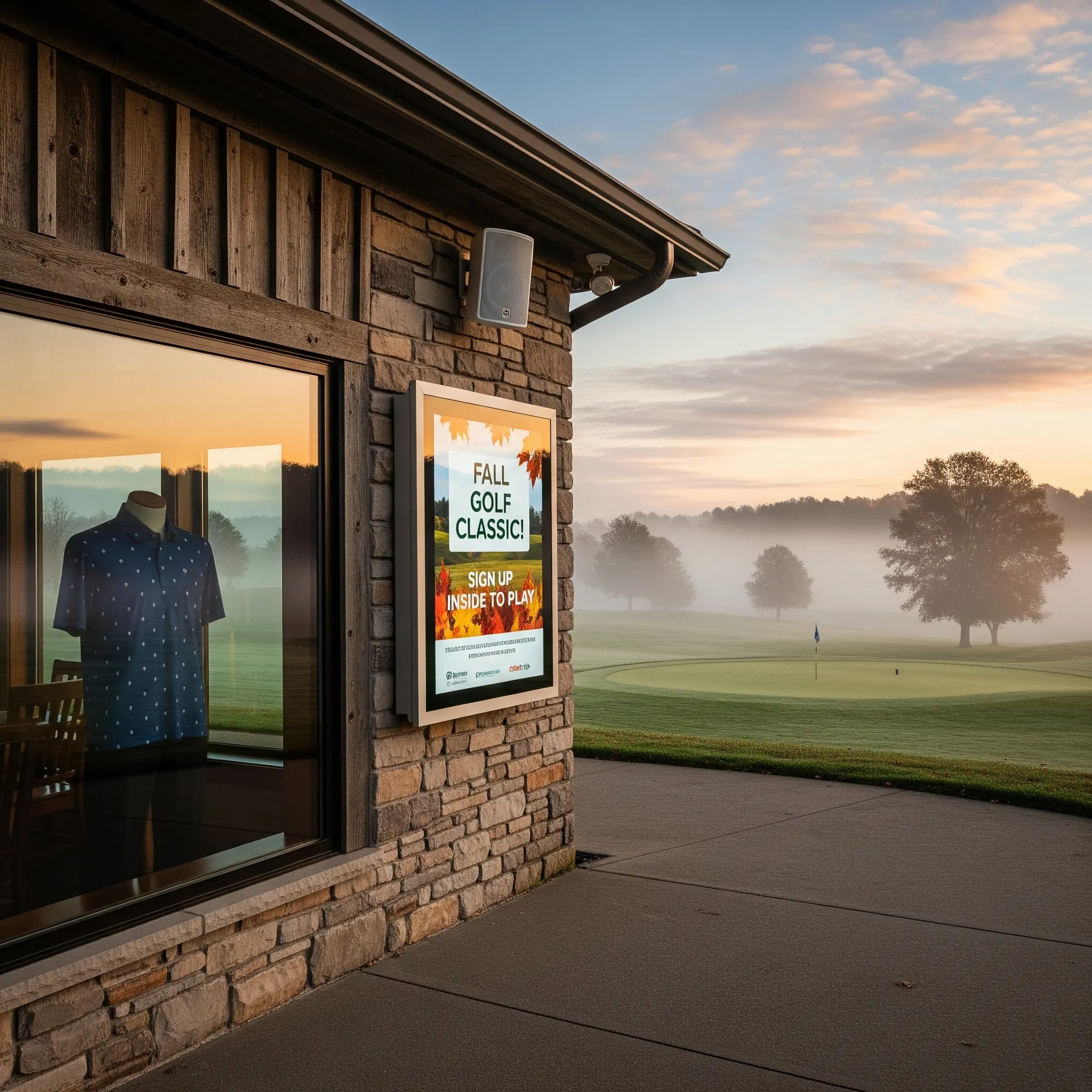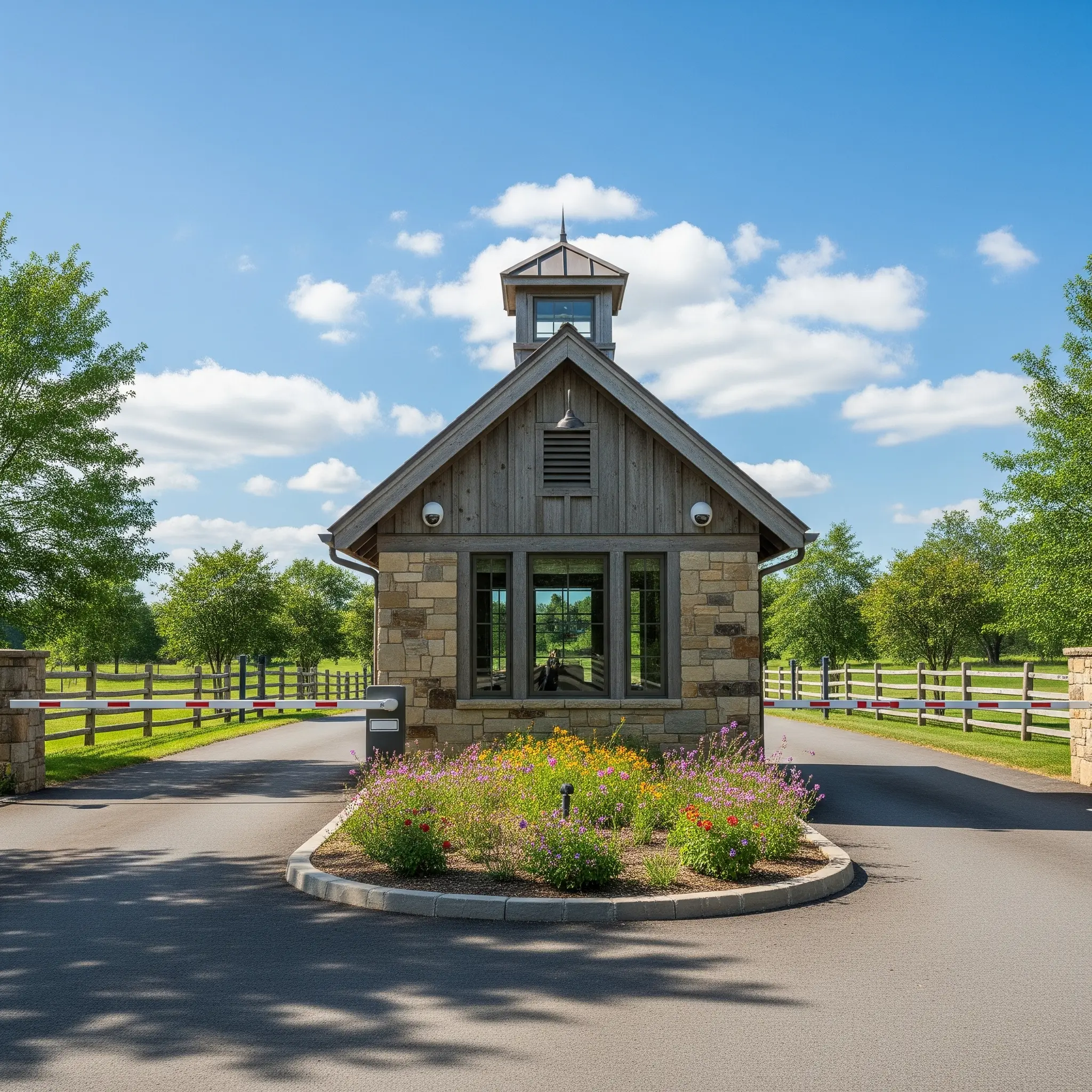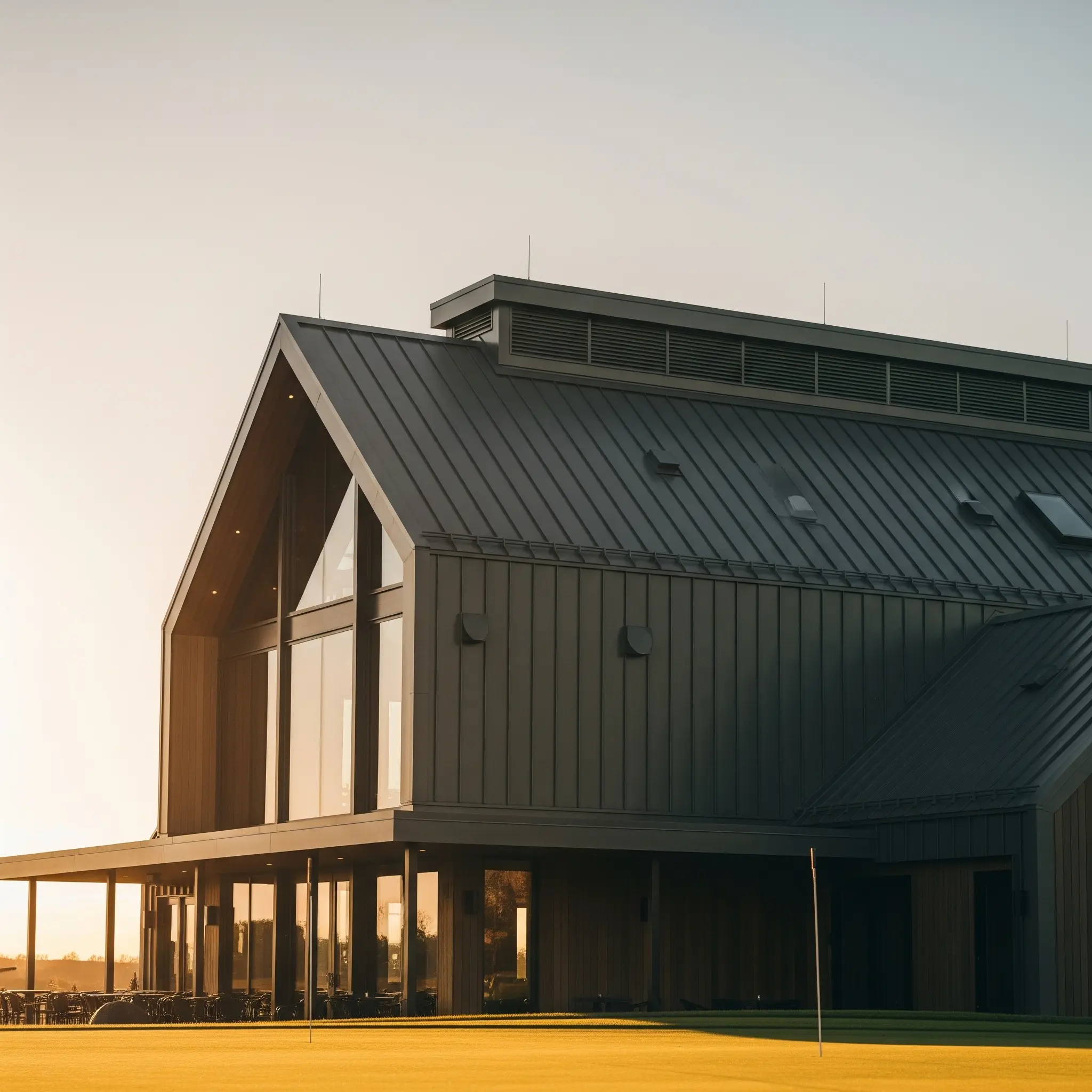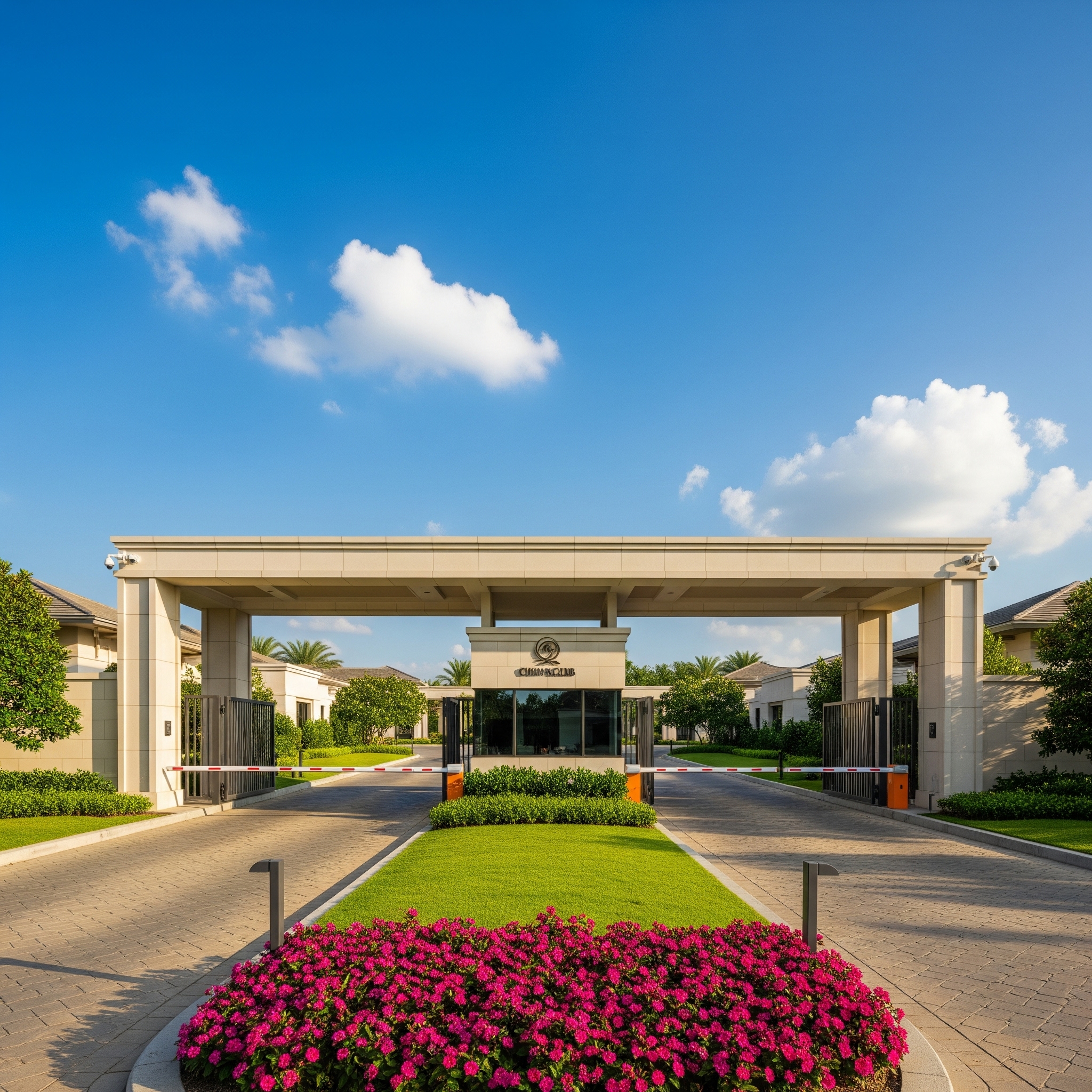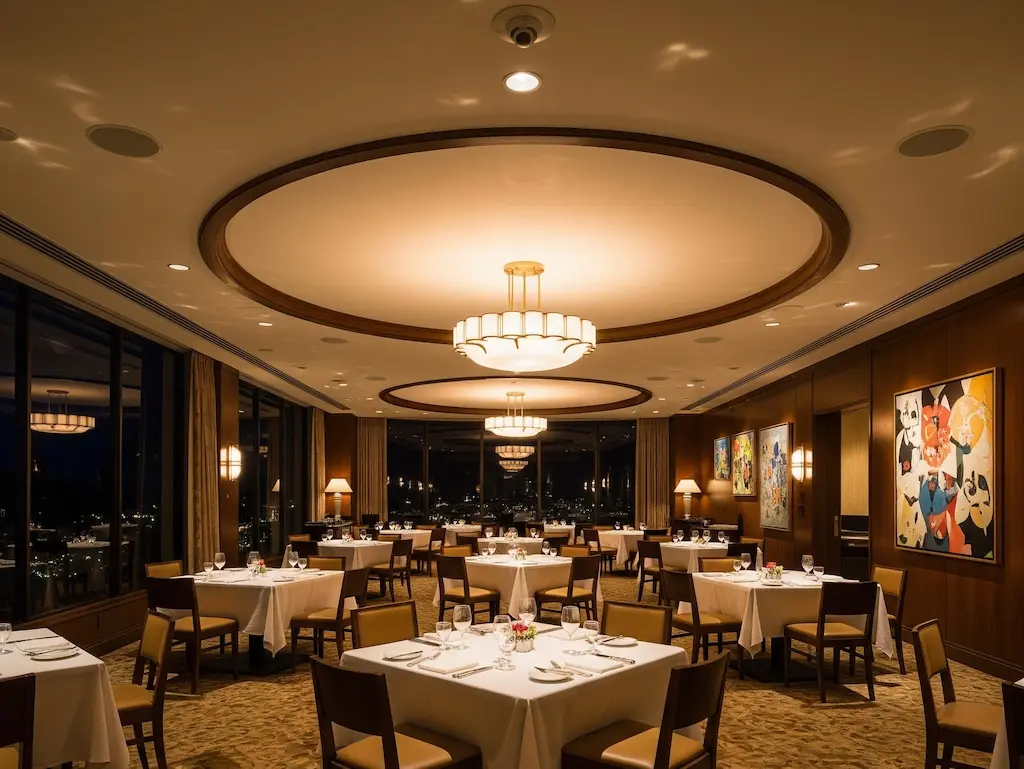Sunlight glints off perfectly raked bunkers as cardinals trill in the pines. Members glide through the porte-cochère, phones already syncing tee times, expecting every pixel and packet to work as flawlessly as the greens. A single buffering wheel on the live leaderboard can ruin that serene morning faster than a lip-out on seventeen.
Behind the scenes, it’s network infrastructure—fiber, switches, access points—that powers modern amenities and country club AV and technology integration. From golf simulators and POS tablets to swing analysis systems and touchless access control, every digital experience at a country club depends on a fast, stable, secure network.
Key Takeaways
Expectations have skyrocketed.
Coverage must stretch from the clubhouse to the cart barn.
Planning beats guesswork every single round.
Today’s Clubs Are Tech Hubs
Country clubs aren’t just about golf and fine dining anymore—they’re tech-driven environments requiring modern technology solutions for private golf clubs. Members expect seamless Wi-Fi and internet access from the front gate to the 18th green. If the network lags, frustration builds quickly, and it reflects poorly on the club.
Why Reliable Networks Matter
- Members expect hotel-quality Wi-Fi in the clubhouse, at the pool, on the driving range, and even out on the course.
- Critical systems rely on it:
- Point-of-sale (POS) tablets
- Golf simulators and AV systems
- Security cameras and access control
- When Wi-Fi fails, payments slow, security systems glitch, and staff can’t deliver the level of service members expect.
Real Example: Why Consumer Gear Doesn’t Cut It
Last summer, a club manager called us in. Their Wi-Fi was spotty—sometimes it worked, sometimes it didn’t. Our techs discovered someone had plugged in a cheap, store-bought router to make their own hotspot, causing interference across the club’s network. We fixed it, explained the problem, and had a laugh—but it drove home a key point:
Premium hospitality requires professional-grade, enterprise networks—not DIY fixes.
How to Build a Rock-Solid Club Network
Step 1: Assess Your Current Setup
Walk the property with Wi-Fi analysis tools to find dead zones—areas where signal drops or disappears.
Create an inventory of all network gear:
- Switches, access points, cables, and firmware versions.
- Backup power supplies (UPS batteries), cable types, and run lengths.
Most clubs discover some outdated or consumer-level gear that needs replacing.
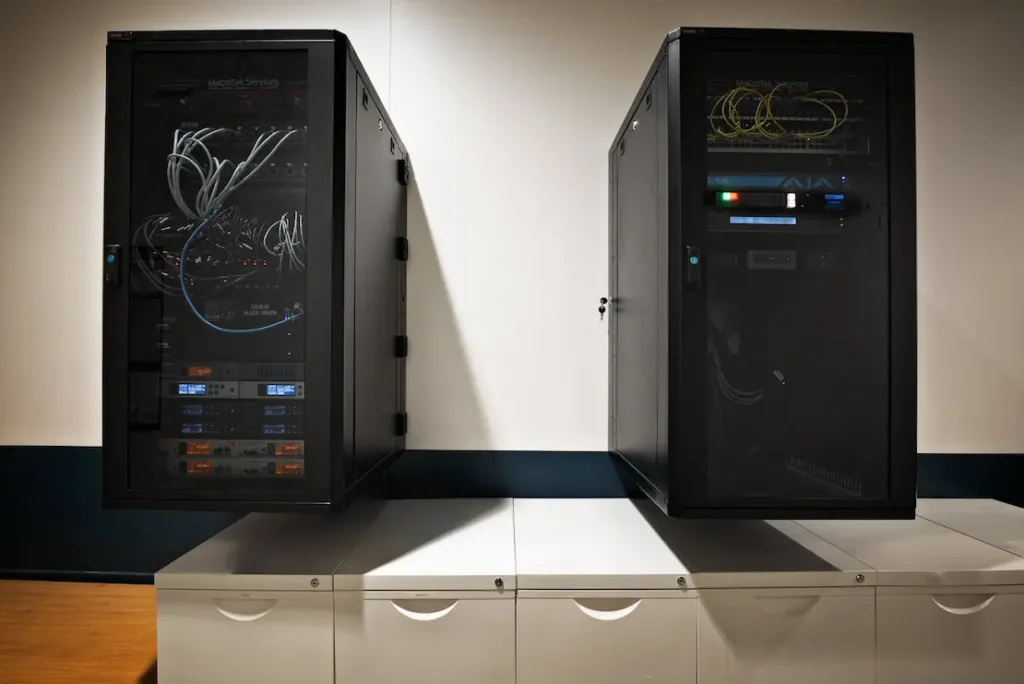
Step 2: Use Enterprise-Grade Equipment
Routers: Handle more traffic, offer failover options, and provide consistent, fast connections.
Firewalls: Protect sensitive data like member information, payments, and security feeds.
Managed switches: Organize and secure network traffic using VLANs.
VLANs: Organize and Secure the Network
A VLAN (Virtual Local Area Network) splits your network into “lanes” for different types of traffic, improving both performance and security.
VLAN
Purpose
1
Members & Guest Wi-Fi
2
Staff (POS systems, VoIP)
3
Security (cameras, doors)
4
IoT (HVAC, Irrigation)
Why VLANs Matter:
Security: If a smart thermostat gets hacked, it can’t access security cameras or payment systems.
Control: Guest Wi-Fi can be bandwidth-limited, ensuring staff systems stay fast—even during busy events.
Access Points: Not Just About Speed
Access Points (APs) are wireless hubs—but they have limits:
- Bandwidth: How much data they can handle.
- Client capacity: How many devices can connect at once (typically 30–50 devices per AP reliably).
During big events (tournaments, weddings):
Add extra APs in high-traffic areas like patios, lounges, and event tents.
Use directional antennas outdoors to cover long fairways.
Set up mesh Wi-Fi in areas where cables can’t reach.
Mixing Fiber and Copper
Fiber: Best for long distances (connecting buildings, outlying areas like maintenance barns). It’s fast, reliable, and future-proof.
Cat6A copper: Best for short distances indoors. It’s affordable and powers devices like cameras using PoE (Power over Ethernet).
Pro Tip: When trenches are dug for irrigation or landscaping, lay fiber at the same time to save on future costs.
Backup Plans & Monitoring Tools
Always have two internet providers (fiber + 5G or coax) for redundancy.
Use UPS batteries and generators to keep systems online during power outages.
Deploy monitoring tools (like Meraki Insight or PRTG) to track the network in real time. Spot issues before members notice.
Refresh Your Network Regularly
Old gear causes slowdowns, security risks, and constant help desk calls. Follow a replacement plan:
Equipment
Replace Every
Wireless gear
5 years
Switches
7 years
Fiber cabling
10 years
Better Wi-Fi Boosts Dining & Sales
Tablet-based ordering at the pool, patio, or ballroom improves service and increases revenue. One club saw a 9% boost in sales after switching to handheld tablets—powered by a reliable Wi-Fi network.
Final Takeaway: Good Wi-Fi = Great Member Experience
A strong, secure network means:
- Faster service
- Protected data
- Happy members
- Less stress for staff
It’s like a great caddie; you barely notice it when it’s working well, but it makes every round smoother.
